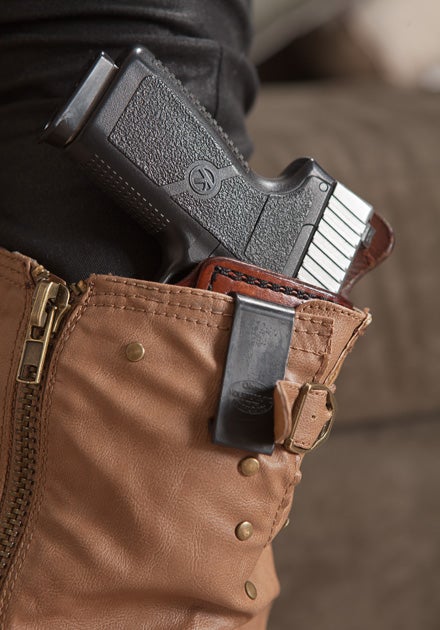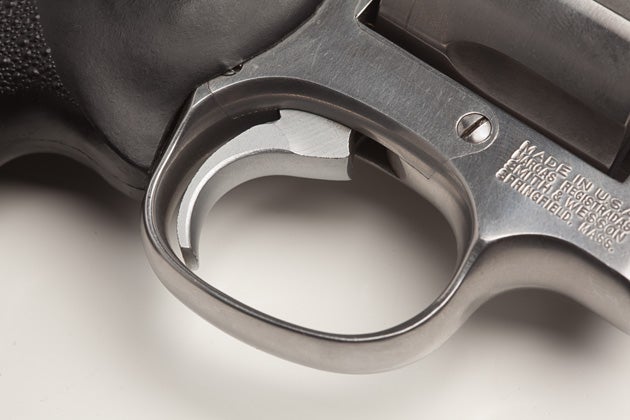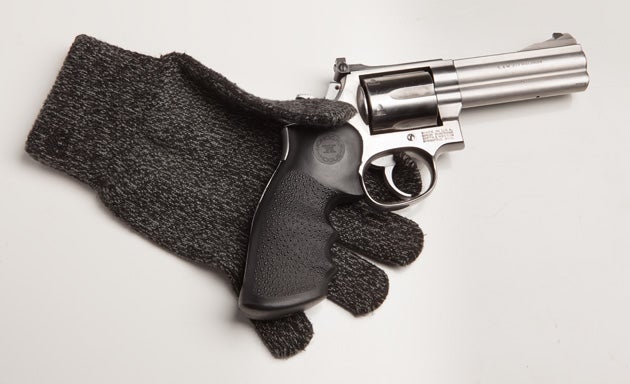Winter Self-Defense Tips
Oleg Volk 12.27.13

The shortest day of the year just passed, but the winter cold and darkness still have a long time to go in most of the US. Many areas are experiencing unusually deep, white piles of snow. While criminal predators are less active in winter, wild and feral predators may be more interested in humans due to the reduction in availability of other food. In short, going armed is still recommended.
Cold weather means more clothing layers. You’d think that makes concealment easier, but consider the problem of actually getting the weapon from under the many layers of clothing. Gloves make the process even harder. Getting to a belt holster through a long coat and around a seat belt while driving is nearly impossible. One expedient solution is moving your gun from the belt to the boot. Especially helpful for driving, this places your weapon fairly securely where you can reach for it without having to unzip a jacket or unbutton a coat.
That, of course, presupposes that you don’t have to take your coat off later in a restrictive environment. Plan ahead. Lighter pistols work better for ankle or calf carry; too much weight on one side can affect your back.
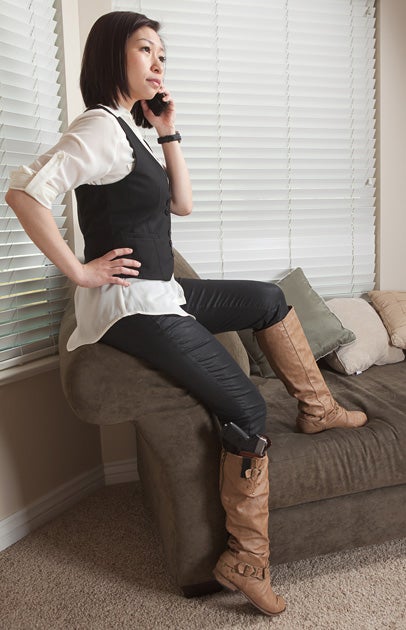
Gloves and mittens become ubiquitous. Besides possibly compromising your grip due to slippery fabric, gloves can also affect reliability of semiautos (by interfering with the slide motion) and even revolvers. Several brands have angled undercuts on their triggers, as shown below:
The shooters gets off one round, then the trigger either locks up or goes back without resetting fully. That results from the fabric or leather of the trigger finger catching under the trigger pivot point. The cylinder may still turn, but the hammer won’t cock or come down on the firing pin.
Be sure to try your revolver outdoors in the cold to make sure that it works with your clothing. Try your autoloader, too. Reduced energy of the powder charge and increased friction of cold oil (especially on weapons carried without direct contact to the body) can cause short cycling or light primer strikes.
Many discussions address the need for additional penetration during the winter months. I suspect that the concern is misplaced, and the actual effect of most winter clothing is increased penetration instead. Felt, fur, down, and other soft filler materials all fill hollow point cavities and turn normally expanding bullets into hole punches. Gerlatin tests indicate about 30 percent increase in penetration in such cases.
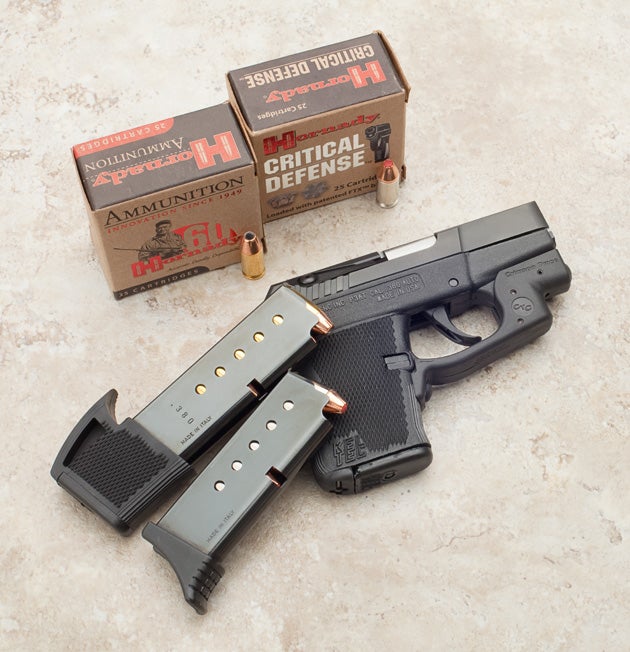
If expansion is desired, then tipped hollow points like Hornady Critical Defense or expanding non-hollow point ammunition like Federal EFMJ would work best. Winter is also the time for extended magazines, both for better grip in gloved hands and to reduce the need to reload when the mag pouch can be as hard to reach as the holster.
Do you have winter-time tips and advice of your own? Feel free to share in the comments.
